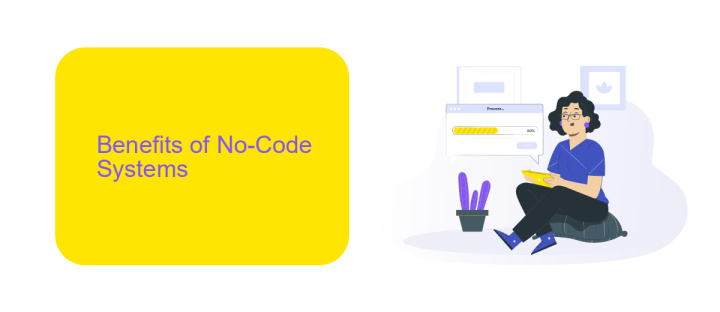No-Code Systems
No-code systems are revolutionizing the way we approach software development, enabling individuals without programming knowledge to create complex applications. These platforms empower businesses to innovate faster, reduce costs, and bridge the gap between technical and non-technical teams. In this article, we will explore the benefits, challenges, and future potential of no-code systems in the digital landscape.
What are No-Code Systems?
No-code systems are platforms that allow users to create software applications without writing any code. These systems utilize visual development environments, where users can drag and drop components to build applications. This approach democratizes software development, enabling individuals with no programming background to create functional applications.
- Visual development interfaces
- Drag-and-drop functionality
- Pre-built templates and components
- Integration with various services
One of the key advantages of no-code systems is their ability to integrate with other services seamlessly. For example, platforms like ApiX-Drive enable users to set up integrations between different applications without any coding. This simplifies the process of data transfer and automation, making it accessible to a broader audience. No-code systems are revolutionizing the way we approach software development, breaking down barriers and fostering innovation.
Benefits of No-Code Systems

No-code systems empower users to create applications and automate workflows without the need for traditional programming skills. This democratization of technology enables businesses to accelerate their digital transformation efforts, reducing the time and cost associated with software development. By leveraging intuitive drag-and-drop interfaces, users can quickly prototype and deploy solutions tailored to their specific needs, fostering innovation and agility within organizations.
Additionally, no-code platforms facilitate seamless integrations with various third-party services, enhancing functionality and streamlining operations. For instance, ApiX-Drive enables users to effortlessly connect different applications and automate data transfers, eliminating manual processes and reducing the risk of errors. This integration capability not only improves efficiency but also allows businesses to scale their operations more effectively. As a result, no-code systems are becoming an essential tool for companies looking to stay competitive in a rapidly evolving digital landscape.
Limitations of No-Code Systems

No-code systems have revolutionized the way businesses approach software development, but they are not without their limitations. One significant drawback is the lack of customization and flexibility compared to traditional coding. Users are often confined to the features and functionalities provided by the no-code platform, which can be restrictive for more complex projects.
- Limited Scalability: As your business grows, the no-code solution may struggle to handle increased demands, leading to performance issues.
- Integration Challenges: While platforms like ApiX-Drive facilitate integrations, some no-code systems may still face compatibility issues with other software tools.
- Security Concerns: No-code platforms might not offer the same level of security as custom-coded solutions, making them vulnerable to breaches.
- Vendor Lock-In: Relying heavily on a single no-code platform can make it difficult to switch providers or migrate data.
- Cost Implications: While initially cost-effective, scaling up no-code solutions can become expensive over time.
Despite these limitations, no-code systems remain a valuable tool for rapid development and prototyping. However, businesses must carefully evaluate their needs and consider potential trade-offs before fully committing to a no-code approach.
How to Choose the Right No-Code System

Choosing the right no-code system can be a game-changer for your business, but with so many options available, it's essential to make an informed decision. Start by identifying your specific needs and goals. Consider what kind of applications you intend to build and the complexity of the tasks you need to automate.
Next, evaluate the features and capabilities of different no-code platforms. Look for a system that offers a user-friendly interface, robust support, and scalability. It's also crucial to check if the platform supports integrations with other tools and services you already use, such as ApiX-Drive for seamless data transfer and automation.
- Assess your technical requirements and limitations.
- Compare pricing models and available plans.
- Read user reviews and case studies.
- Test the platform with a free trial or demo.
Finally, consider the long-term implications of your choice. Ensure the platform aligns with your business growth plans and offers continuous updates and support. By taking these factors into account, you can select a no-code system that best fits your needs and helps you achieve your objectives efficiently.
- Automate the work of an online store or landing
- Empower through integration
- Don't spend money on programmers and integrators
- Save time by automating routine tasks
Examples and Use Cases of No-Code Systems
No-code systems have revolutionized various industries by enabling users to create applications without the need for traditional programming skills. For instance, platforms like Webflow allow designers to build fully functional websites using a visual interface. Similarly, tools like Airtable enable users to create custom databases and workflows tailored to their specific needs. These systems are particularly beneficial for small businesses and startups that may not have the resources to hire a full-fledged development team.
Another compelling use case is in the realm of integrations. Services like ApiX-Drive facilitate the seamless connection between different applications, allowing for automated workflows without writing a single line of code. This is particularly useful for marketing teams looking to integrate various CRM, email marketing, and analytics tools to streamline their operations. By leveraging no-code systems, organizations can significantly reduce development time and costs, while still achieving complex functionalities.
FAQ
What are No-Code Systems?
How do No-Code Systems benefit businesses?
Can No-Code Systems handle complex workflows?
What types of applications can be built with No-Code Systems?
How can I integrate No-Code Systems with other tools and services?
Apix-Drive is a simple and efficient system connector that will help you automate routine tasks and optimize business processes. You can save time and money, direct these resources to more important purposes. Test ApiX-Drive and make sure that this tool will relieve your employees and after 5 minutes of settings your business will start working faster.


